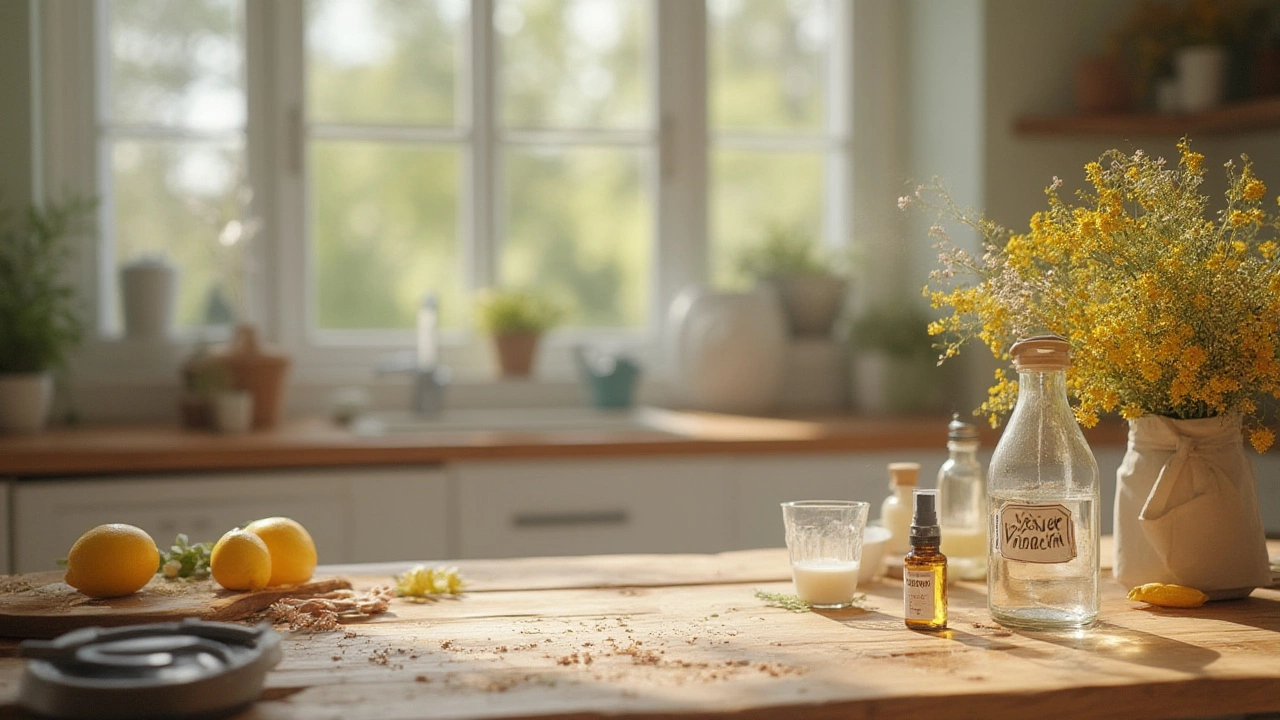Safe Cleaning Products: Your Guide to Non‑Toxic Home Cleaning
When you grab a spray or a wipe, you probably don’t think about what’s inside the bottle. That’s a mistake because many cleaners hide harsh chemicals that can irritate skin, aggravate allergies, or harm the environment. The good news? You can switch to safe products without giving up cleaning power. Below are easy ways to spot non‑toxic options, make your own basics, and keep costs low.
Reading Labels Made Easy
The first step is learning the label. Look for terms like “biodegradable,” “plant‑based,” or “phosphate‑free.” If a product lists ingredients you recognize – vinegar, baking soda, lemon oil – it’s usually safe. Avoid anything with words that end in “‑phene,” “‑ol,” “‑ate,” or “‑ide,” because those often signal solvents or surfactants that can be harsh. Certifications such as EU Ecolabel, Green Seal, or the UK’s Eco‑Label give extra confidence that a product meets strict safety standards.
Most mainstream brands now have a “green line.” The label might be bright green, but don’t rely on color alone. Check the ingredient list, and if the list is short (five items or less) you’re probably dealing with a simple formula that won’t linger on surfaces or in the air.
DIY Safe Cleaners You Can Make at Home
If you enjoy a quick kitchen project, making your own cleaners is both cheap and effective. Mix one part white vinegar with one part water for a glass and tile spray – it cuts grease without leaving streaks. For a scrubbing paste, combine baking soda with a splash of water; it tackles grime in ovens, sinks, and tubs. Add a few drops of tea tree oil or citrus essential oil for a fresh scent and extra antimicrobial boost. These recipes use items you already have, so no extra trips to the store.
When you need a stronger degreaser, mix 2 cups of hot water, ¼ cup of washing soda (sodium carbonate), and a squirt of liquid Castile soap. This works well on stovetops and greasy floor spots. All these mixtures break down dirt with natural chemistry, so you avoid synthetic surfactants found in many commercial sprays.
Buying safe products can still fit a budget. Look for bulk sizes, store‑brand eco lines, or refill stations that let you reuse containers. Many UK supermarkets now offer refill packs for dish soap and laundry detergent, cutting plastic waste and price per litre. Compare the cost per use, not just the sticker price, and you’ll see that green choices often match or beat regular brands.
If you need a professional service – for example after a renovation or for deep carpet cleaning – ask the cleaning company specifically about the products they use. Reputable firms will list their safe cleaners and can provide a safety data sheet upon request. This gives you peace of mind that the crew isn’t spraying hidden toxins around your home.
Switching to safe cleaning products isn’t about perfection; it’s about making smarter swaps that protect people and the planet. Start with one new product, read the label, or try a simple DIY spray. Soon you’ll notice fewer smells, less skin irritation, and a cleaner conscience. Your home can be spotless without the chemicals – and that feels pretty good.

Natural All-Purpose Home Cleaners: Safe Ingredients, Real Results, and Easy DIY Recipes
Discover what makes a natural all-purpose home cleaner, safe ingredients you can use, benefits over chemical cleaners, tips, and easy homemade recipes for every room.
Read More